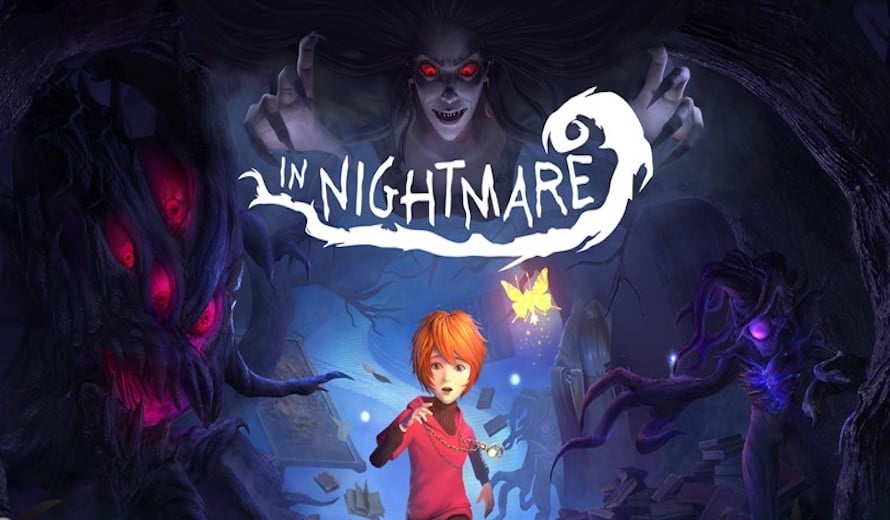An exploration of young Bill’s trauma, In Nightmare proves just as nightmarish for the player. The Finger Guns review.
Indie horror game successes are a dime a dozen at the moment. Over the last decade, we’ve been subjected to all manner of psychological torture, each bringing another terrifying element to draw in our attention.
Despite the successes though, there are plenty of failed efforts, abysmal revivals of old IPs and messy combinations of old school horror tropes with modern accessibility and mechanics. In Nightmare is the latest smaller budget effort to deliver some eerie thrills and adrenaline pumping scares, but its execution leaves it languishing in the lucid dreams of disappointment.
Sleepy Hollow
As In Nightmare opens, we’re treated to an incredibly brief cutscene setting the scene for a malicious looking lady approaching our young leading figure. Bill, is his name, and it’s fair to say he’s having a right torrid time of things. Giving us control over Bill’s movement you’ll start learning the basics – we can sprint, interact with items, push and pull objects, duck into small spaces and work our way through the linear labyrinth levels.
Moving out of his bedroom, you’ll start to notice things are quite amiss in our poor Bill’s world. There’s no one about, everything seems weirdly proportioned and strange malevolent forces are wandering around. If there’s a tickbox for horror adventure game openings, In Nightmare probably ticks most of them. In fact, even retro problems of historical horror icons like Silent Hill rear their aggravating heads immediately – a weirdly fixed, strangely zoomed camera spends more time obscuring your view than helping, but we’ll come back to this.
Working your way through the opening areas, you’ll be acquainted with your Navi-esque glowing butterfly companion, whom Bill relies on for reassurance and comfort. As well as gameplay aid, of course. Our dutiful floating buddy will stick alongside Bill when moving with the left stick, while it can be controlled separately within a limited radius using the right stick. As you journey through Bill’s personal Hell, it can light up hidden items, uncover hidden paths to collectibles, ping directions of the nightmarish creatures and… well, not much else, but he’s alright.
Straight off the bat, the lack of dialogue or any communication between Bill and his golden guardian makes it difficult to feel a connection with them. His powers will also drain with use, though aside from his alternate blue from to uncover paths, you’ll have little need for the replenishment items you can find. After the first chapter, you may find like me that his supportive powers are rather underwhelming, like if the camera didn’t have night vision in Outlast.
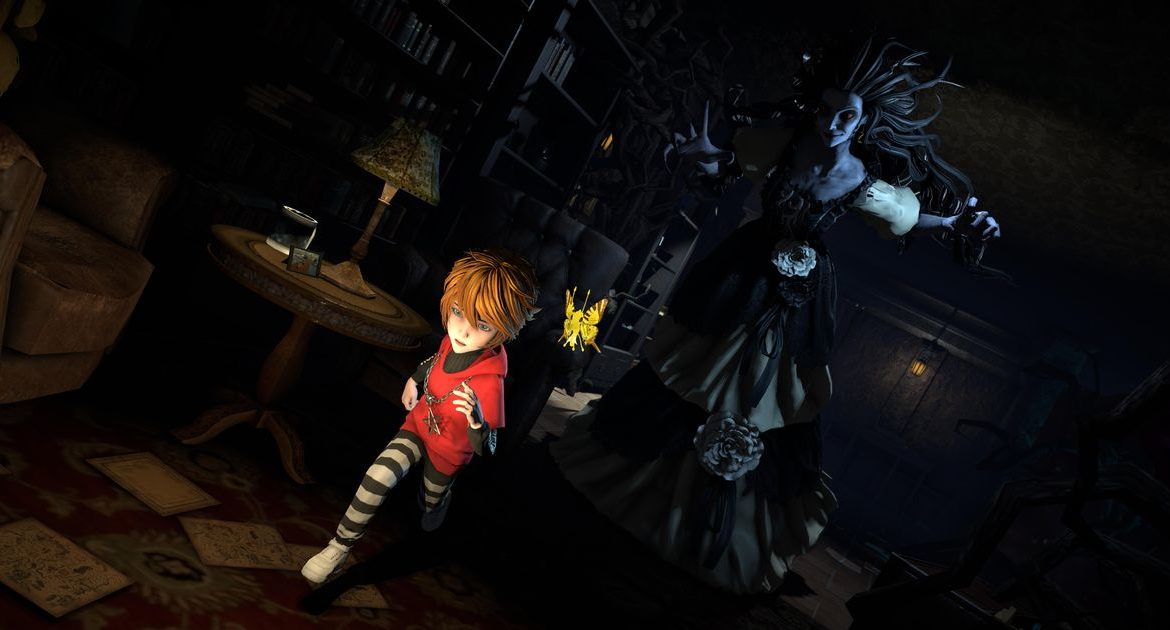
Visions of Freakish Design
So far, I’ve been pretty cordial towards In Nightmare. Everything deserves a fair initial introduction before it gets torn apart, after all. Well, it’s time to delve into what makes this game such a nightmarish experience to play.
The basic blocks of a horror adventure game are here: you traverse linear levels finding items to open doors, move things to solve puzzles and avoid getting grabbed by the nasties lurking around. In Nightmare is supposed to be stealth orientated – using cover to wait out detection cones, finding hidden paths to circumvent the bosses, that kind of thing. Problem is, this approach takes an age. Like, to the point it would double the actual length of content of the game.
Luckily, the sprinting and chase mechanics are woefully simplistic, allowing you to basically outrun your assailant to the objective. Once you hit the next area, you hear a ding and they disappear, who needs a sneak stat eh? In chapter two for example, it was far more effective charge past the cyclops-like creatures and let myself get killed after hitting a checkpoint, as it would then just reset their spawns and stick me at the new progress point. It took 10x less time and was far more interesting. Which is a problem for a game built around avoiding threat and being cautious.
The formula never truly diversifies either. Sure, the puzzles change and boss/enemy figures look different, but you’re always fundamentally pulling switches or finding items to open a door or gate while trying with minimal effort to avoid getting caught. You can’t fight back, but you can abuse a tight space to break the enemy AI and you have get-of-jail-free cards in dream orbs which you can throw to stun any enemy, allowing you to just keep running, wait till they get close, drop your stun, run off, rinse repeat. It’s not necessarily broken, but it’s just easily abusable and you’re almost encouraged to do so to avoid the tedium of playing it as intended. Imagine playing Resident Evil 7 but in a world where Jack Baker can never actually catch you, it removes any tension whatsoever.
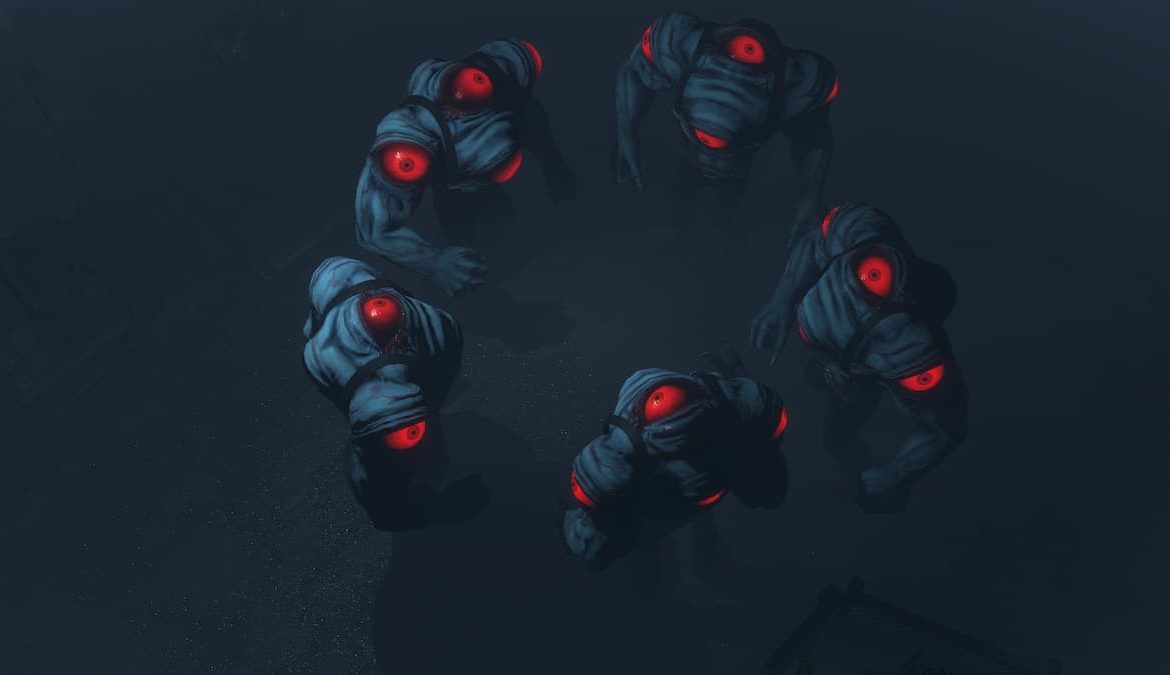
Puzzle Me This
With general encounters a bust, the hope naturally falls to the puzzles to pick up the slack. After all, any horror game worth its salt has to have good, brain-teasing challenges to overcome. Pleased to report, In Nightmare has taken that horrific see-saw approach to this, with most being pointless “go here, get key, go back”, a few engaging head-scratchers (a gold rubix cube skull? Nice.) and the occasional obtuse “fuck this shit”, rage-inducing game ruiner puzzle.
The epitome of this awful collection came in chapter 3. Opening with one of the most nauseatingly boring puzzles I think I’ve ever come across, you’ll spend more time running around the rings you rotate than actually doing any thinking. Honestly, I did more laps of that goddamn section than Lewis Hamilton cruising around the Monaco GP. Make a mistake? Fuck you, start again, including all of that running you just did. Puzzles are fun when they’re snappy, reward your intuition and thinking and allow you to retry quickly when you screw up. In Nightmare gets all of these facets wrong.
Even other sections like a circus funhouse swarming with deadly traps is depressingly under-utilised. You’d think it would involve jump-scares, building up of tension, using phobias of clowns or… something. Nope. Instead, you just use the bottom left door 4 times and you’re out. Two of the rooms didn’t even have traps – awesome. I may have missed it, but the clue of what colour/door you’re supposed to use didn’t seem apparent and the solution was just an effort of time-wasting trial and error. In Nightmare is positively littered with “puzzles” that are happier wasting your time traversing them than actually having to solve them.
It really, really, REALLY doesn’t help that whenever you die or mess up, you usually respawn before unskippable in-game cutscenes or with significant chunks of progress lost, requiring you to spend minutes getting back to where you were. It’s like having a 4 minute respawn cooldown in an FPS, in single player, where you watch a garbage advert every single time. Over the course of the chapters, it grated on me so much I genuinely wanted to just look up the solutions to avoid the repetition or better yet, just stop playing altogether.
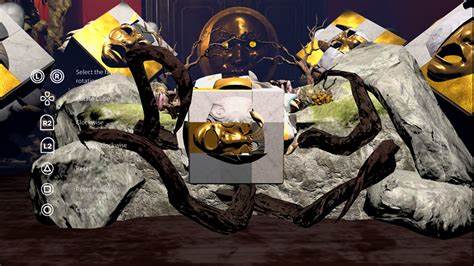
Post Typos Stress Disorder
Completing a trifecta of uninteresting video game elements is In Nightmare’s story. Credit where it’s due, Bill’s personal journey through his nightmares and trauma is a lot better handled than the gameplay, but it’s still… well, night terror inducing.
When I said Bill’s having a rough time of life, I wasn’t kidding. In Nightmare touches on a lot of heavy themes. Whether it be abuse, neglect, manipulation of minors, abandonment or bullying, it certainly isn’t afraid to tread a darker tone and path. Most of this exposition and narrative is delivered through key items you’ll discover relating to Bill’s life and past, showing a spectral outline of events with key characters.
If you’re prone to sensitive subjects or are wary of childhood trauma related narratives, you may find some difficult stuff being brought up here. It’s never explicitly shown or demonstrated, but the various notes and letters will flesh out a lot of the horrendous experiences Bill has suffered. It’s hard to empathise as effectively when the method of delivery is so detached and lacking in emotive connection, but it’s enough to link the chapters together in a coherent means and provide a solid underpinning for the events occurring within Bill’s nightmares.
So you may be thinking “well, that sounds pretty alright, why would it be lumped with the poor gameplay and puzzles then?”. A good question indeed, let me explain. Letters have a litany of typos, a personal favourite being “egnite the fireplace”, banter. More importantly, the way language is used in the written communications is just… awfully structured. There’s a document which reads like the wikipedia breakdown of how an anti-depressant works for no other reason than, depression is a thing? There’s no rhyme or reason to why it’s such a jargon-heavy note laying around a house, especially when Bill’s dad is shown to not give much of a care to Bill’s wellbeing anyway.
Sentence structure, grammar and choice of wording is also completely off too. Bill, despite being a young kid, talks about concepts like manipulation in his notes, despite, you know, being a pretty young kid? There’s a weird contradiction that arises where in the same note he questions and pleads why people have treated him awfully, yet then there’ll be a line written as if he’s aged 20 years, studied a psychology degree and psycho-analysed the whole situation. It’s a weird mix and I don’t know what lead to it, whether it’s a translation issue or just a lack of insight into how a kid’s note would actually be written. Either way, it’s really jarring and completely undercuts the value of the exposition throughout.
I will stress that the overall ideas behind the story are interesting and have some thematic potential, but they’re squandered with a multitude of delivery issues and a disconnected presentation. Poor Bill, kid needs a break man.
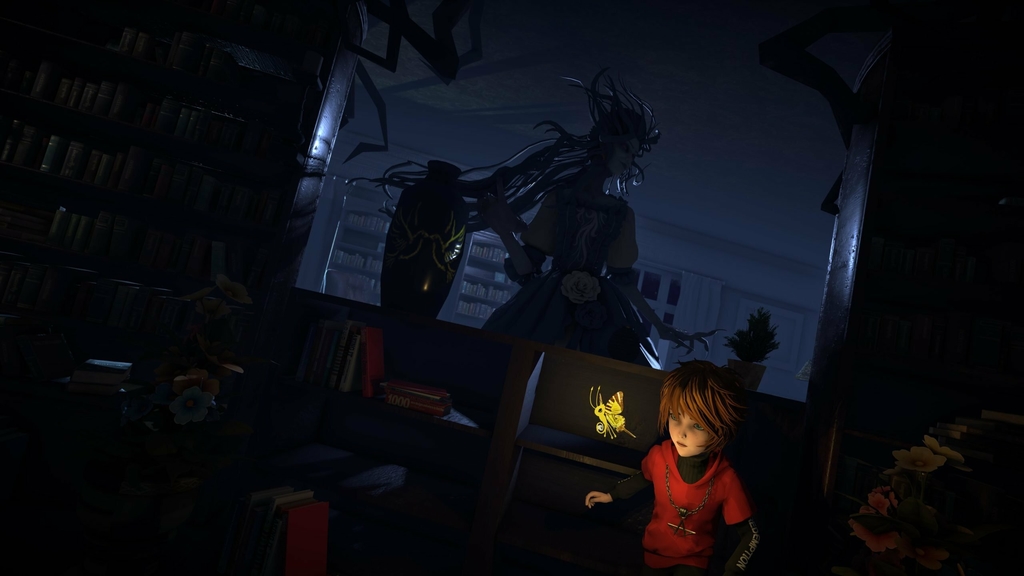
Bug Me No More
Before wrapping up, I want to emphasise the most night-terror inducing part of trying to play In Nightmare: the plethora of glitches, technical problems and rage-inducing design decisions.
Almost every area in the game suffers from an awful mix of screen-tearing and chugging framerate drops, making animations of running through hallways as painful as a needle in the eye. If you’re required to jump across gaps, best of luck to you. A frustrating input delay sent me to my untimely ethereal death 3 times on the same jump because it’s neither an on-rails guided system or a completely free jump-as-you-will system. If you reach an edge, Bill will do that little animation all video game characters do when about to fall, hit jump too quick and he’ll just run straight off. Hit jump too early and the trigger window for a proper jump won’t activate, so he’ll meekly flop off the end. It pissed me off no end and it makes platforming about as fun as eating nails dipped in acid.
And the camera. My God, the piece of cow excrement camera. I’m certain there’s a special places in Hell reserved specifically for this goddamned relic of unholy misery. The angle is fixed, meaning if an object is in any way tall it’ll block your view of the entire environment. Sure, I can see Bill’s outline, but I’m not looking for Bill, I’m looking for an object, a door, a F^”%&*$ enemy who can kill me in one hit. I NEED TO SEE EVERYTHING ELSE. But no, you can’t. In Nightmare also regularly forces you into small areas underneath other geometry so you can’t actually see the path either. Amazing. Truly is.
Graphically, it’s serviceable. The central area where you can select the next level and review your collected items is nice and suitably whimsical. The crazed, homicidal, murder demon lady in chapter 3 is also brought to life with sadistic panache. Everything else though just comes up as muted, repetitive or pretty bland. Environments have some level of detail to flesh them out, but it’s all very lifeless and given that so much of the game is centered on Bill’s imaginative nightmares, there was so much more scope for horrific, terrifying or even just mildly eerie atmospheres. Alas, it’s all pretty lacking. The musical motifs repeat endlessly too, it’s like having It’s A Small World After All churning out of a boombox attached to your ear.
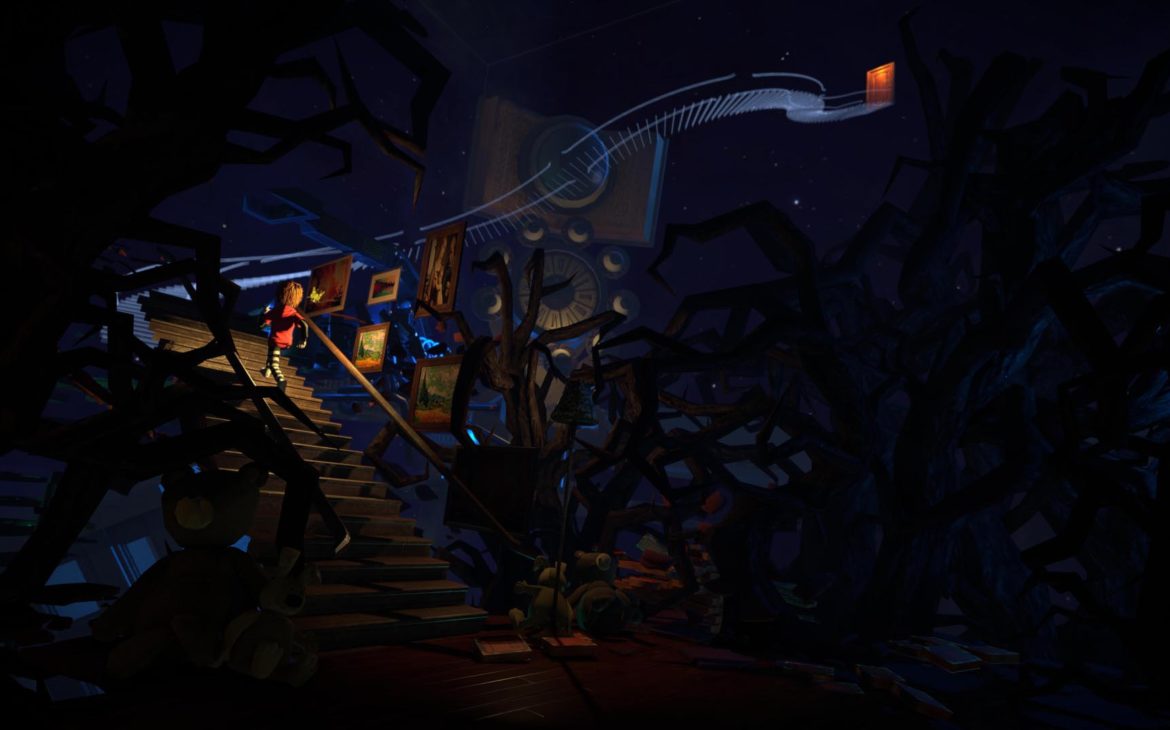
Wake Me Up Inside
If you search In Nightmare for basically anything, you’re more than likely going to see more of the Little Nightmares games instead. As I forced myself to keep playing to see if this dreary title improved, I couldn’t help but think that Little Nightmares has already perfected this style of game in a much more complete manner. Your time would certainly be better spent playing those established gems, that’s without a doubt.
It’s not broken by any means and in moments it has some decent ideas. With 6 chapters and a ridiculous number of collectibles and hidden upgrades to find, there’s plenty to do. The problem is, I just didn’t want to do any of it. Why seek out upgrades for abilities I’m already not bothering to use? Why find more story notes that are poorly written? Why play anymore of this marathon simulator that’s more interested in filling out time than constructing interesting challenges? Lots of whys, very few recommendations.
In Nightmare is the mildest of scary dreams, you’ll leave it wishing you’d never had it, while also being so unaffected by it it’ll be forgotten in just a moment.
In Nightmare is a pale competitor to other titles of the horror-adventure genre. Stealth that’s preferable to charge through, puzzles that are the blandest of time-wasters and a narrative of dark themes burdened with typos and poor delivery. Real nightmares threaten your sleep with terror and fear, whereas In Nightmare only threatens to bore or frustrate you to death.

In Nightmares is available now on the PS5 (review platform) and PS4.
Developer: Beijing Magic Fish Studio
Publisher: Maximum Games
Disclaimer: In order to complete this review, we were provided with a promotional copy of the game. For our full review policy, please go here.
If you enjoyed this article or any more of our content, please consider our Patreon.
Make sure to follow Finger Guns on our social channels –Twitter, Facebook, Twitch, Spotify or Apple Podcasts – to keep up to date on our news, reviews and features.
